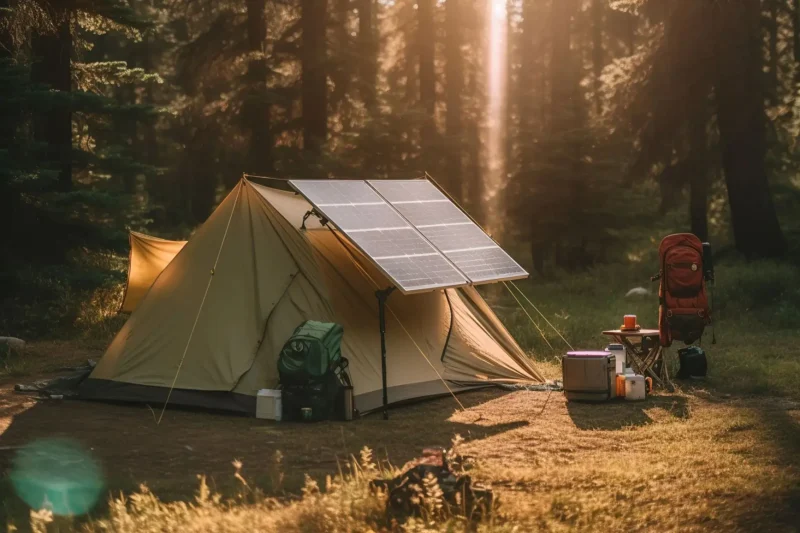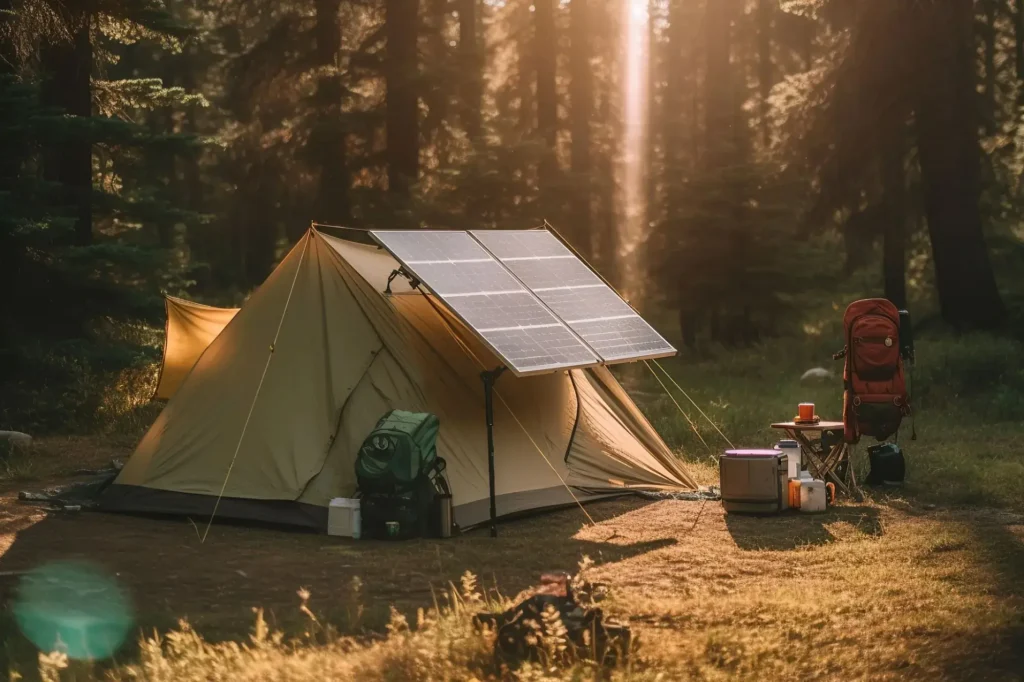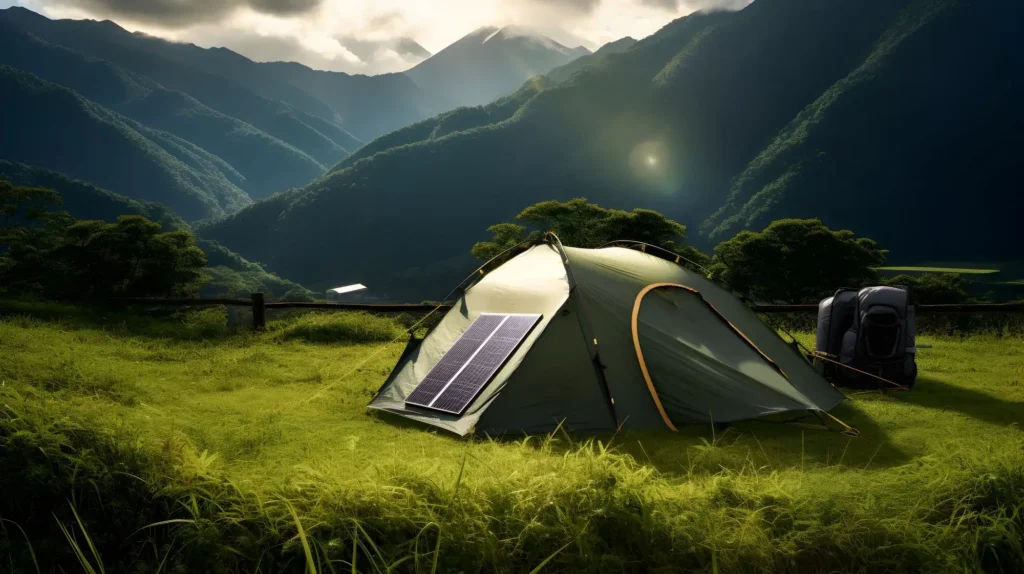Off-Grid Escapes: Planning Solar-Powered Camping Adventures

Imagine stepping away from the daily grind to surround yourself with nature, all while enjoying modern comforts thanks to the sun.
Solar-powered camping provides a unique blend of wild landscapes and tech-savvy amenities. This isn’t your standard camping trip; it’s a sustainable outdoor adventure in tune with nature.
Ready to embark on your own solar-powered adventure? This guide will help you understand how to reduce your environmental footprint while enhancing your camping experience.
Discover insights on selecting the right equipment, optimizing energy capture, and prioritizing safety, among other vital considerations.
Understand The Basics Of Solar Power

Understanding the fundamentals of solar power sets the stage for a successful outdoor experience. Solar panels, made up of photovoltaic cells, convert sunlight into electricity you can use.
It’s crucial to know the power output of your panels, measured in watts. This figure helps you determine the number of panels you’ll need and where to best place them for maximum performance.
But it’s not just about generation; it’s also about storage. High-quality batteries can store enough juice to keep your gadgets running through the night.
Choose The Right Equipment

Now that you’re familiar with the basics, you can focus on selecting equipment that meets your specific needs. Create a list of all devices you intend to power, from smartphones to portable coolers. Calculate the total wattage your gear will need to find the right solar panels and batteries.
Add a 20% buffer for unexpected demands. Remember, you’re going to be exposed to the elements. Look for rugged, weather-resistant equipment. Consult reviews and recommendations from seasoned solar campers for added confidence.
Optimize Sunlight Harnessing
Positioning plays a significant role in your solar energy setup. Properly oriented panels ensure you capture as much sunlight as possible. Aim to maximize sun exposure between 9 a.m. and 3 p.m., but this can vary based on location and the season.
To enhance efficiency, angle your panels toward the sun and adjust them periodically to follow its path. Some advanced setups even feature tracking systems to automate this task. Prepare for cloudy days by having backup batteries or an alternative power source ready.
Monitor Your Energy Use
Efficient management of your solar arrangement demands a clear understanding of your energy consumption. Calculate watt-hours for each device by multiplying its wattage by your expected usage time. Add up these figures to assess your daily energy needs.
With this data in hand, you’ll know if your existing setup will suffice. Many modern solar configurations offer real-time energy tracking through apps or displays, which is a valuable feature to consider.
Prioritize Safety And Environmental Responsibility
Setting up your solar equipment safely is non-negotiable. Follow the guidelines provided by the manufacturer, make sure all connections are secure, and properly ground your setup.
Being eco-friendly is part of the ethos of solar camping. Stick to Leave No Trace principles, minimize your impact on natural surroundings, and pack out what you pack in.
Be alert to any fire restrictions in the area, particularly when using electrical equipment. This ensures both your safety and the preservation of the environment.
Troubleshoot Common Issues Effectively
Even well-thought-out setups can hit snags. Knowing how to identify and solve problems is critical, whether they involve unexpected battery drain or decreased power output.
Regular maintenance goes a long way. Keep all connections secure and free of corrosion. Shade on panels can dramatically reduce efficiency.
For sudden issues, check for physical damage or faulty parts. For complex problems, consult your user manual or experts in the field.
Master The Art Of Energy Efficiency
Finding a balance between energy production and consumption is vital to a successful solar-powered camping trip. Adopting energy-efficient practices, like LED lights or optimizing device settings, can help conserve power.
Coordinate high-energy activities like laptop charging or running a portable cooler to coincide with peak solar performance. This strategy helps you avoid depleting your stored power prematurely.
Stay Informed And Connected
While you’re enjoying your off-the-grid getaway, keep an eye on weather forecasts to adapt your setup as needed. Use apps or portable weather stations to get reliable information to plan for cloud cover or storms.
Though you might relish the solitude, complete isolation carries risks. Solar-powered radios or satellite phones offer an emergency lifeline without depleting critical power reserves. These devices are not just convenient; they’re essential for safety.
Explore The Versatility Of Solar Panels
Solar panels have applications beyond just camping. They can power boats and RVs and even serve as emergency power for your home. The versatility of solar panels makes your investment even more valuable.
Consider the broader solar power applications, such as cooking in solar ovens, purifying water, and generating heat. These multiple use cases mean your investment will serve you in various scenarios.
Conclusion
Ready for a new kind of outdoor adventure? You’re now well-equipped to mix the best of both the natural world and technology through solar-powered camping.
With a deep understanding of solar power, durable gear, strategic energy capture, and a focus on safety and environmental responsibility, you’re all set for an unforgettable, eco-friendly journey.
So go ahead and pack those solar panels and batteries your sustainable wilderness experience is just around the corner.






